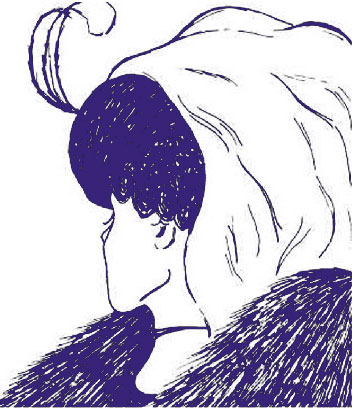Have you ever found yourself in a conversation that left you feeling anxious, frustrated, or even angry? Perhaps it was with your boss, your spouse, a friend, or even a stranger. You wanted to articulate your thoughts, but the words just wouldn’t come. You tried to understand their viewpoint, but it seemed impossible. You wanted to resolve the issue at hand, but instead, you made it worse.
If this sounds familiar, know that you’re not alone. Difficult conversations are a common part of life and can pose challenges for anyone. However, they don’t have to be seen as obstacles. Instead, they can be viewed as opportunities for learning, growth, and connection. One of the keys to navigating these challenging conversations is understanding perspectives.
Just like in the optical illusions of the Rubin Vase or the Young Lady and Old Lady, our perceptions can drastically alter what we see and how we interpret it. This principle applies not only to visual stimuli but also to our interactions and conversations. Our backgrounds and experiences shape our perceptions and determine our focus.
I recently had the opportunity to facilitate communication training with a group of amazing coaches from XP League Asheville, an esports league for kids. We spent two hours discussing strategies for having difficult conversations. After the training, we all went out to dinner. I asked a few of them about the most impactful part of the training. They told me that the most impactful part was our discussion about perspectives. Specifically, we discussed how different people can interpret the same set of facts differently based on their perspectives and perceptions, leading to seemingly incompatible truths. This inspired me to write a quick article and shoot a video demonstrating the mechanisms behind this phenomenon of differing perspectives. It’s fascinating how different people can have different interpretations of the same event, leading to different truths that may seem incompatible.
Perceptions and Perspectives
The Rubin Vase is a drawing where, depending on your focus and perception, you will see either a vase in the center or two faces facing one another. Similarly, in the Young Lady or Old Lady illusion, your perspective will determine whether you see a young lady or an old lady in the picture. Can you see them both?
As fascinating as these illusions are, what’s truly intriguing is that this phenomenon happens in the world outside of optical illusions. The mechanisms that drive what we see are based on our past experiences and the filters through which we process the world.
While these illusions are fun to discuss in theory, we run into problems when we operationalize them in significant events in our lives. It’s the same mechanisms that allow us to see completely different images from these illustrations also dictate how we perceive and interpret the world around us. Our background and experiences influence what we see and focus on.
For instance, if you grew up in a small town or ranch in Montana, your perception of the political landscape of the United States would be vastly different from someone who grew up in the suburbs of Atlanta. Each location presents different challenges. In Atlanta, issues like homelessness are more prevalent, and sometimes pulling yourself up by your bootstraps isn’t enough to set people on a clear path to self-sufficiency. On the other hand, if you’re from Montana, it might be hard to understand why people can’t just dust themselves off and make their way in the world.
This discrepancy leads to different ways of looking at the world. When we aren’t able to appreciate someone else’s perspective, it can feel like they’re just wrong or ignorant. This can create problems because if I’m from Montana and believe that you’re a liberal bleeding heart who wants to coddle the downtrodden when I know for sure that the way forward is a firm hand and a stern talking-to, then there’s a conflict.
My perspective isn’t the only perspective. Just like arguing that what’s there in that picture is a young lady. If I’m not willing to take the time to really look at this picture of what’s happening or what’s right in front of my face and see something from someone else’s point of view, I’m never going to see the old lady. But not only am I never going to see the old lady, I’m going to argue and fight from my perspective. And I am going to make sure that you know that you’re wrong because it’s just ridiculous to think that there’s an old lady in that picture.
This is a problem with politics, religion, and constructs that our identities are wrapped up in. If my identity is wrapped up in believing that what’s in that picture is a young lady and you tell me there’s an old lady in that picture, it feels like there’s something wrong with my identity. There is nothing wrong with my perspective, it’s just my experience. And there isn’t anything wrong with your perspective, it’s just your experience. And until we can start appreciating other people’s perspectives, it’s going to be really hard to find solutions to the bigger problems in life.

So here’s a challenge for you: Find someone you disagree with and engage them in conversation about a contentious topic. The goal isn’t to win an argument but to understand their perspective. Can you spot the “old lady” in their picture? Can you appreciate their viewpoint without trying to convince them of your own?
It might not be easy, and it might not always go smoothly. And I ask you to be judicious in who you pick to practice on. But starting the conversation is the first step towards understanding. And who knows? After you listen and acknowledge their perspective, they could be curious about your views. Give it a shot; you might just find that these difficult conversations aren’t so difficult after all.
Because we should all be asking ourselves, is it a duck or rabbit?







